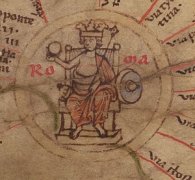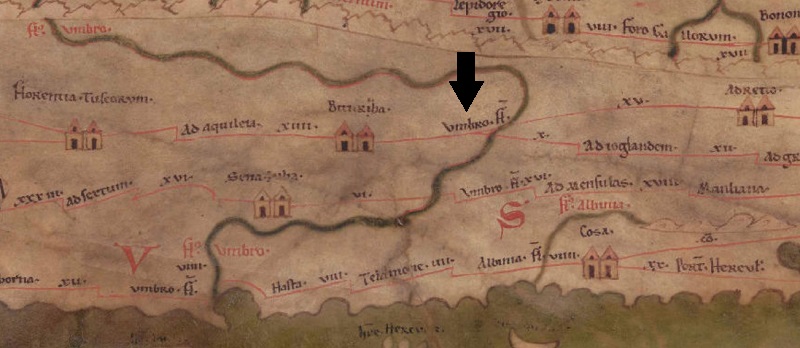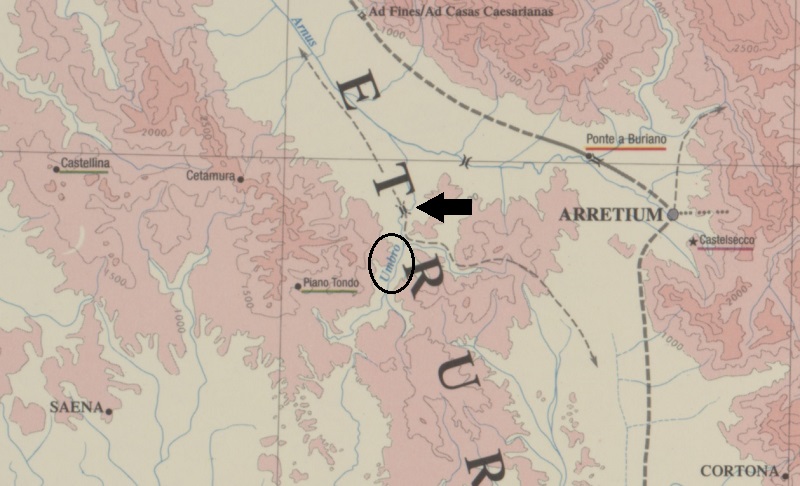
Tabula Peutingeriana – Einzelanzeige
| Toponym TP (aufgelöst): | Vmbro Flumen (Umbro Flumen) |
| Name (modern): | Pogi / Pieve di Capannole (Bucine) (TIR) |
| Bild: |  Zum Bildausschnitt auf der gesamten TP |
| Toponym vorher | - Bituriza |
| Toponym nachher | XV Adretio X Ad Ioglandem |
| Alternatives Bild | --- |
| Bild (Barrington 2000) |
 |
| Bild (Scheyb 1753) | --- |
| Bild (Welser 1598) | --- |
| Bild (MSI 2025) | --- |
| Großraum: | Italien |
| Toponym Typus: | Ortsname ohne Symbol |
| Planquadrat: | 3B3 / 3B4 |
| Farbe des Toponyms: | schwarz |
| Vignette Typus : | --- |
| Itinerar (ed. Cuntz): |
|
| Alternativer Name (Lexika): |
|
| RE: |
|
| Barrington Atlas: | *Umbro fl. (42 B2) |
| TIR / TIB /sonstiges: | Umbro fl. (TIR K 32, 184, 909), Umbro fl. (TIR K 32, 183f., 908) |
| Miller: | Vmbro fl. |
| Levi: |
|
| Ravennat: | Umbrion (p. 74.32) |
| Ptolemaios (ed. Stückelberger / Grasshoff): |
|
| Plinius: |
|
| Strabo: |
|
| Autor (Hellenismus / Späte Republik): |
|
| Datierung des Toponyms auf der TP: | --- |
| Begründung zur Datierung: |
|
| Kommentar zum Toponym: |
Kommentar Köhner: |
| Literatur: |
Desjardins, Table, p. 136, col. 3, no. 11. |
| Letzte Bearbeitung: | 18.10.2025 17:21 |
Cite this page:
https://www1.ku.de/ggf/ag/tabula_peutingeriana/trefferanzeige.php?id=103 [zuletzt aufgerufen am 27.12.2025]